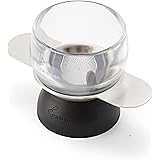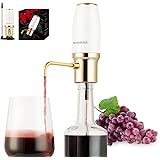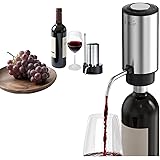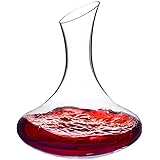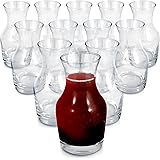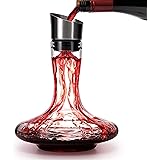Understanding the art of professional wine pouring significantly elevates any dining experience, transforming a simple act into a display of thoughtful hospitality. While simply opening a bottle and pouring seems straightforward, mastering a few key techniques can prevent drips, enhance presentation, and ultimately impress your guests. The video above provides an excellent visual guide to these fundamental steps, demonstrating how to handle the bottle with finesse.
However, true mastery goes beyond the basic motions; it involves understanding the ‘why’ behind each technique. This detailed guide expands upon the visual instructions, offering deeper insights into the nuances of professional wine pouring. We will explore specific methods for preparing your bottle, controlling your pour, and presenting your wine with elegance, ensuring every sip begins with perfection.
Mastering Professional Wine Pouring: Techniques for the Perfect Serve
For centuries, the ritual of wine service has been synonymous with sophistication and care. Whether you are hosting a formal dinner or enjoying a casual evening with friends, demonstrating professional wine pouring skills showcases respect for the wine and your guests. This detailed approach minimizes spills and also enhances the overall perception of quality, making every occasion feel more special.
Achieving this level of service is entirely within your grasp with a little practice and attention to detail. We will delve into each critical component, from preparing your tools to executing a flawless pour. Elevate your hosting capabilities by integrating these refined techniques into your routine, turning every wine service into an impressive performance.
The Essential Role of the Wine Napkin
A humble napkin plays a crucial role in maintaining a clean and elegant wine service. Its primary purpose is to catch any drips that might run down the bottle, preventing unsightly stains on your table or label. Furthermore, the napkin provides a secure and comfortable grip, particularly on chilled bottles that might have condensation.
Selecting the right napkin is important for both functionality and aesthetics. Opt for a clean, lint-free cloth napkin, perhaps made of linen or cotton, which absorbs moisture effectively. Folding it precisely, as demonstrated in the video, ensures it is ready for immediate use and looks professional throughout the service.
The standard practice involves folding a square napkin four times to create a manageable, thick pad. You then wrap this around the neck of the bottle, just below the capsule, ensuring a snug fit. Twisting the excess fabric allows you to secure it firmly, giving you complete control during the pour and minimizing any loose ends.
Gripping the Bottle: Control and Confidence
A confident and stable grip is fundamental to a graceful wine pour. While many simply grasp the bottle by its body, a more professional technique involves utilizing the bottle’s “punt.” The punt refers to the indentation at the bottom of a wine bottle, originally designed for structural integrity and sediment collection.
To employ this method, insert your little finger firmly into the punt while your thumb and remaining fingers wrap around the body of the bottle. This grip provides enhanced control and balance, allowing for a more deliberate and steady pour. This technique is especially useful for larger bottles or when pouring with one hand.
For lighter bottles or those with a less pronounced punt, a firm grasp around the base of the bottle with your thumb in the punt (if present) and fingers supporting the sides is perfectly acceptable. The objective remains consistent: maintain a secure hold to prevent any accidental slips or wobbles, which can lead to spills.
Executing the Pour: Preventing Drips and Splashes
The moment of truth arrives when you begin to tip the bottle and allow the wine to flow. Start by pouring slowly and steadily, aiming the stream directly into the center of the wine glass. Maintain a consistent angle to ensure a smooth, controlled flow, avoiding any sudden movements that could cause splashing.
A crucial technique for preventing drips involves a subtle twist of the wrist at the end of the pour. Once the desired amount of wine has been dispensed, gently twist the bottle upward and slightly backward as you raise it. This motion severs the stream cleanly, drawing any lingering drops back into the bottle rather than allowing them to run down the side.
The ideal pour fills the glass approximately one-third to one-half full, depending on the glass shape and the type of wine. This leaves ample room for the wine to breathe and for the guest to swirl and appreciate its aromas. For example, a red wine benefits from more space in a large bowl, while a crisp white wine might require slightly less volume.
Post-Pour Polish: Wiping and Presentation
After successfully pouring, the next step involves meticulous attention to detail with your napkin. Promptly use the wrapped napkin to wipe away any residual wine from the bottle’s neck and lip. This critical action ensures the bottle remains impeccably clean, ready for subsequent pours, and reinforces a professional image.
Additionally, fold one end of the napkin neatly underneath the bottle as you place it back on the table. This provides a clean buffer between the bottle and the surface, preventing condensation or any remaining drips from contacting the tablecloth. This small gesture contributes significantly to the overall elegance of your wine service.
Consider the placement of the bottle when returning it to the table. Always position it within easy reach but not obstructing conversation or other items. For red wines, it often remains on the table to maintain optimal serving temperature, while white and sparkling wines benefit from being returned to an ice bucket or chiller to preserve their chill.
Beyond the Basics: Elevating Your Wine Service
While the fundamental pouring techniques are essential, true wine service excellence incorporates several other considerations. Proper glassware, for instance, dramatically impacts the aroma and taste perception of wine. Matching the glass shape to the wine type enhances the drinking experience for your guests.
Furthermore, understanding ideal serving temperatures for various wines can unlock their full potential. Chilling white wines too much mutes their delicate flavors, whereas serving red wines too warm can make them seem flabby and alcoholic. Decanting certain red wines, especially older vintages or those with sediment, allows them to breathe and separates the clear liquid from any particulate matter.
These elements, combined with your refined professional wine pouring skills, create a holistic and memorable dining experience. Consider explaining a bit about the wine’s origin or flavor profile as you pour, further engaging your guests. Ultimately, your thoughtful presentation reflects your passion for wine and your dedication to hospitality.
Practicing these techniques will transform your wine service from merely functional to truly distinguished. Each pour becomes an opportunity to demonstrate your expertise and enhance the enjoyment of every glass. Elevating your professional wine pouring methods adds a touch of sophistication to any occasion, leaving a lasting positive impression on your guests.


